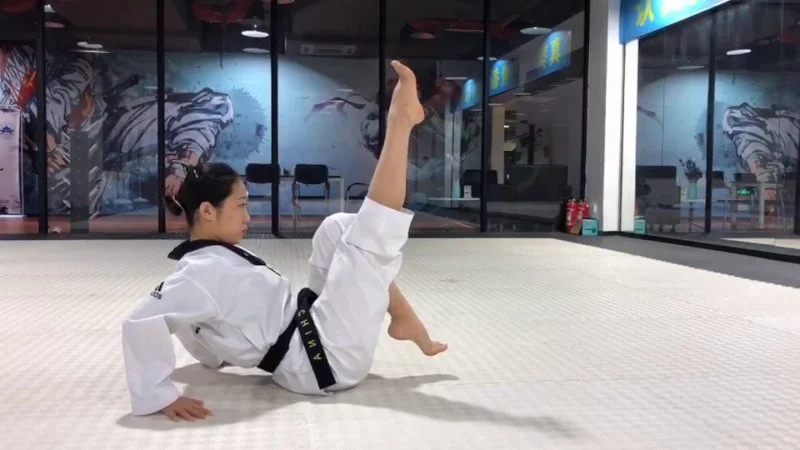
- Understanding the Front Kick
- Common Mistakes in the Front Kick
- How to Fix the Mistakes
- Advanced Tips for Improving the Front Kick
Understanding the Front Kick
The Tae Kwon Do front kick, or "Ap Chagi," is one of the most fundamental yet powerful kicks in martial arts. It involves extending the leg forward with a straight knee and striking with the ball of the foot. The front kick is often used in both self-defense situations and competitions. To perform it correctly, you must engage your core, keep your balance, and ensure proper foot positioning. Whether you're a beginner or an experienced practitioner, understanding the core mechanics of the front kick is crucial for improving your technique.

Northampton Karate / northampton karate
NorthamptonHampshire CountyMassachusetts
320 Riverside Dr, Florence, MA 01062, USA
Common Mistakes in the Front Kick
Many martial artists struggle with perfecting their front kick. Here are some of the most common mistakes to watch out for:
- Incorrect Foot Positioning: One of the most common mistakes is not striking with the ball of the foot. Some beginners may accidentally use the toes or the flat foot, reducing the effectiveness of the kick.
- Weak Chambering: Failing to properly chamber the leg before the kick can lead to an ineffective front kick. The leg should be pulled up before being thrust forward to generate maximum power.
- Not Using the Hips: The front kick should engage not only the legs but also the hips. A lack of hip rotation can result in a kick that lacks force and precision.
- Loss of Balance: Improper posture during the kick can lead to a loss of balance. Ensuring your body remains aligned and centered while executing the front kick is key to maintaining stability.
How to Fix the Mistakes
Now that we've covered some common mistakes, it's time to focus on how to fix them and improve your Tae Kwon Do front kick:
- Foot Positioning: Always aim to strike with the ball of your foot. Practice the kick slowly at first to ensure proper foot alignment. The toes should be pulled back, and the bottom of your foot should be the striking surface.
- Chambering the Leg: Chambering is crucial for generating power and speed. Make sure to pull your leg up to the chamber position—about waist height—before thrusting it forward. This motion will add precision and strength to your kick.
- Engaging the Hips: To generate more power in your front kick, use your hips effectively. As you extend your leg, rotate your hips forward to follow through with the kick. This adds more force and can make your front kick more powerful.
- Maintaining Balance: Keep your posture straight and your center of gravity aligned over your standing leg. Engage your core and use your arms for balance as you execute the kick. If you feel yourself losing balance, try focusing on tightening your core muscles and adjusting your posture.
Advanced Tips for Improving the Front Kick
Once you've corrected the common mistakes in your front kick, you can take it a step further with these advanced tips:
- Increase Speed and Fluidity: Speed is essential for a successful front kick. Practice performing the kick quickly and fluidly without sacrificing form. This will make your front kick more difficult for opponents to block.
- Focus on Targeting: A front kick is most effective when aimed at a specific target, such as the opponent's midsection. Practice focusing on a target during each kick to improve accuracy and precision.
- Incorporate Combinations: Combining the front kick with other techniques, such as a roundhouse or sidekick, can make your kick more unpredictable and versatile. Work on fluid transitions between kicks to improve your overall martial arts repertoire.
By practicing these tips and focusing on improving your form, you'll soon find that your Tae Kwon Do front kick becomes faster, more powerful, and more accurate. Keep practicing, and soon, you'll be able to execute the perfect front kick with ease.
If you're looking for additional training resources or high-quality Tae Kwon Do gear, be sure to visit Jeuns TKD Hub for the best products and services.

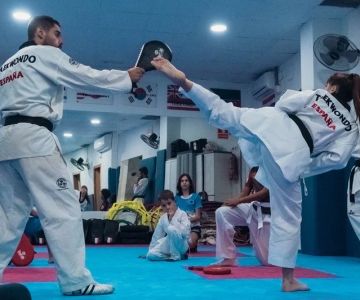

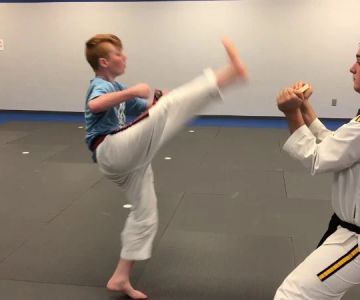

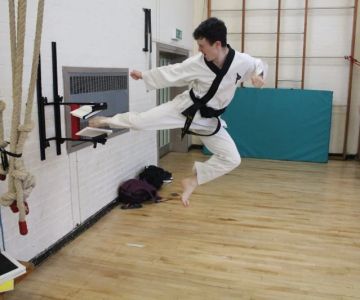

 Millsboro Martial Arts4.0 (11 reviews)
Millsboro Martial Arts4.0 (11 reviews) SOTA Martial Arts, LLC5.0 (2 reviews)
SOTA Martial Arts, LLC5.0 (2 reviews) Old School Martial Arts4.0 (5 reviews)
Old School Martial Arts4.0 (5 reviews) ABK Collective (America's Best Karate of Danville)5.0 (7 reviews)
ABK Collective (America's Best Karate of Danville)5.0 (7 reviews) Hamilton Karate5.0 (13 reviews)
Hamilton Karate5.0 (13 reviews) S12 MuayThai MMA5.0 (23 reviews)
S12 MuayThai MMA5.0 (23 reviews)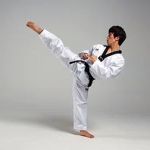 How to Execute a Jumping Roundhouse Kick to the Head
How to Execute a Jumping Roundhouse Kick to the Head How to Execute a Double Kick Combination in Sparring
How to Execute a Double Kick Combination in Sparring How to Perform a Flawless Axe Kick: A Step-by-Step Guide
How to Perform a Flawless Axe Kick: A Step-by-Step Guide DIY Tae Kwon Do Training Equipment for Home Practice
DIY Tae Kwon Do Training Equipment for Home Practice How to Increase Your Vertical Jump for Tae Kwon Do Flying Kicks
How to Increase Your Vertical Jump for Tae Kwon Do Flying Kicks The History of the Tae Kwon Do Peace Corps
The History of the Tae Kwon Do Peace Corps